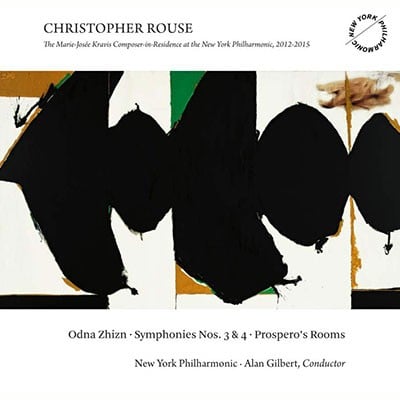picc.2.2.corA.2.bcl.2.dbn-4.4.4.1-timp.perc(3)-2harps-strings
Abbreviations (PDF)
Boosey & Hawkes (Hendon Music)
Over the years I’ve often toyed with the concept of “rewriting” a work composed by someone else. By this I do not mean “correcting” or “improving” it; rather, my idea has been to take some central aspect of an already composed work and consider it anew.
My third symphony is an attempt to do just this. The unusual form of Prokofiev’s Symphony No. 2 furnished the old bottle into which I have tried to pour new wine. Among Prokofiev’s symphonies this one is, I believe, of especially high caliber, though it is rarely programmed. He called it his “symphony of iron and steel,” and it is unquestionably one of his more aggressive and uncompromising scores. Cast in two movements - an opening toccata-like allegro followed by a set of variations - Prokofiev’s own architecture was in turn influenced by that of Beethoven in his final piano sonata. I thus took this structure as my own and tried to maintain Prokofiev’s own proportions between the two movements.
There is little in the way of actual quotation from Prokofiev’s symphony. However, Prokofiev’s opening repeated-note trumpet blasts also begin my symphony, though Prokofiev’s D has here been replaced by an F. There is also a direct quote at the end of my first movement: the solo percussion passage at the end of Prokofiev’s first movement has been transferred here by way of homage. As in the Russian master’s score, the music of this movement is often savage and aggressive.
The second movement of Beethoven’s sonata consists of a theme with four variations and the equivalent movement in Prokofiev’s symphony of a theme with six variations. I decided to split the difference and commit to a theme-with-five-variations form. The variations are of notably disparate character, and the musical language ranges from the dissonant and barbaric to the overtly tonal. After the statement of the theme, the bright and glittering first variation gives way to a highly romantic variation scored for strings and harps only. The third variation is moderate in tempo and mood, but the short fourth is a mostly quiet whirlwind in an extremely fast tempo. The final variation, which follows without pause, possesses a bacchanalian abandon. A final reprise of the theme, again a reference to Prokofiev’s form, brings the symphony to a close.
The work was completed in Baltimore, Maryland on February 3, 2011. Lasting about twenty-five minutes, it is scored for piccolo, two flutes, two oboes, English horn, two clarinets, bass clarinet, two bassoons, contrabassoon, four horns, four trumpets, four trombones, tuba, two harps, timpani, percussion (three players), and strings. It is dedicated to my high school music teacher, John Merrill; without his kindness and encouragement I might never have found the fortitude to persevere in my dream of being a composer.
— Christopher Rouse
Reproduction Rights:
This program note may be reproduced free of charge in concert programs with a credit to the composer.
"Commentators on Rouse's work frequently use words like 'exciting' or 'energetic,' and from the opening trumpet fanfare of the first movement, you can see what they mean. Unlike much new music, there are no extended excursions into serial techniques or abstract expressionism; instead it stays comfortably tonal. Even the dissonances don't seem so much grating as they do stimulating. Rouse also provides many islands of consonance along the way so every listener's musical GPS stays in perfect synch. All of this is supported by lively, active percussion - a constant rhythmic pulse that takes hold of you and won't let go ... This symphony, free of extra musical subtext, is nevertheless highly affecting. It is also accessible with unique orchestrations that make it seem fresh without being trite, overbearing or too cerebral ... this could easily become a programming staple of orchestras worldwide."
— John Huxhold, St. Louis Post-Dispatch

New York Philharmonic/Alan Gilbert
Dacapo 8.226110

